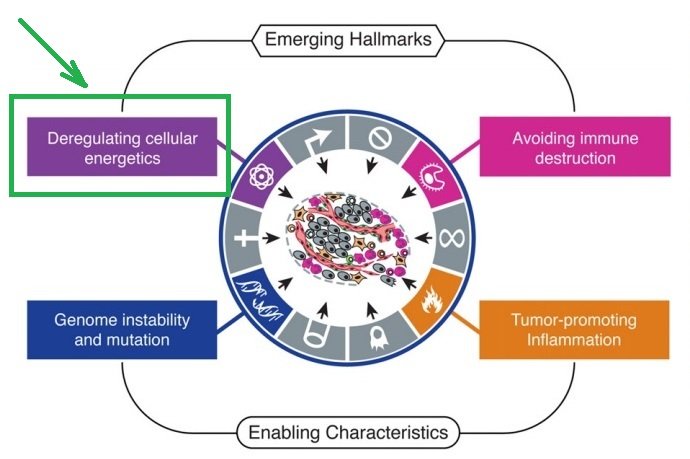In a previous post I wrote about the extraordinary complexity of cancers and I discussed two widely cited papers (40,000+ citations) from the same authors, Hanahan and Weinberg.
The first paper is from 2000 and the second one is basically an updated version of it from 2011. To get the context, please go and read the post.
As a refresher, I remind about the findings of Hanahan and Weinberg (2011) with respect to the similarities of cancers, even though each cancer is unique from a genetic standpoint. The hallmarks described by these researchers are:
- Sustaining Proliferative Signaling
- Evading Growth Suppressors
- Resisting Cell Death
- Enabling Replicative Immortality
- Inducing Angiogenesis
- Activating Invasion and Metastasis
- Reprogramming of Energy Metabolism
- Evading Immune Destruction

If I were to have written about each of them in detail in my first post, it would have turned extremely long and possibly unreadable. I'm going to try and discuss some details of each of these hallmarks in individual posts. I'll start with energy metabolism.
Reprogramming Energy Metabolism
The uncontrolled proliferation of cancer cells involves, in part, alteration of energy metabolism to support division and growth. Hanahan and Weinberg (2011) explain that:
"Under aerobic conditions, normal cells process glucose, first to pyruvate via glycolysis in the cytosol and thereafter to carbon dioxide in the mitochondria; under anaerobic conditions, glycolysis is favored and relatively little pyruvate is dispatched to the oxygen-consuming mitochondria.
Otto Warburg first observed an anomalous characteristic of cancer cell energy metabolism: even in the presence of oxygen, cancer cells can reprogram their glucose metabolism, and thus their energy production, by limiting their energy metabolism largely to glycolysis, leading to a state that has been termed “aerobic glycolysis.”
This is, in part, due to the abnormal activity of lactate dehydrogenase (transfers a hydride between molecules), an enzyme that catalyzes the back and forth conversion of lactate to pyruvate - NAD+ to NADH and back.

- in normal cells, LDH converts pyruvate to lactate in conditions of low to no oxygen.
- in cancer cells, LDH activity is increased regardless of the supply of oxygen.

From Hanahan and Weinberg (2011) we learn that:
"According to one long-forgotten (Potter, 1958) and recently revived and refined hypothesis (Vander Heiden et al., 2009), increased glycolysis allows the diversion of glycolytic intermediates into various biosynthetic pathways, including those generating nucleosides and amino acids; this facilitates, in turn, the biosynthesis of the macromolecules and organelles required for assembling new cells."
Thus, this alteration of energy metabolism provides highly abnormal support for biomass synthesis (faster proliferation and division).
Potential Agents to Target this Hallmark
According to Wickramasekera (2013):
"Changes in the tumor microenvironment, oncogene activation, transcription rate of enzymes and transporters involved in glycolysis and oxidative metabolism are believed to push cancer cells into adopting aerobic glycolysis. These changes are a result of transcription factors such as HIF and p53."
It is therefore reasonable to think that inhibiting the activity of LDH represents a good target for cancer treatment. Following the same rationale, agents and drugs that disrupt aerobic glycolysis should receive increased interest from the research community and from pharmaceutical companies.
Reprogramming energy metabolism is only one of the numerous hallmarks implicated in the progression of cancers. Some researchers inappropriately attribute the highest of importance to this hallmark claiming, that cancers are metabolic diseases and not more [period]. This statement is refuted when observing patients in which metabolic strategies alone have failed to be efficient in stopping the development of cancer.
It is and it will be challenging to research the ways in which targeting this hallmark may have potential beneficial/detrimental outcomes on the rest of the currently discovered hallmarks. Looking at its complexity, there is no wonder to me that we haven't yet been able to fully elucidate the mechanisms of cancers. But I remain optimist for what's to come...
To stay in touch with me, follow @cristi
Credits for Images: [Adapted from Hanahan and Weinberg 2011], [Bcndoye - CC BY-SA 3.0 - via Wikimedia Commons] and [Jazzlw - CC BY-SA 3.0 - via Wikimedia Commons].
Cristi Vlad, Self-Experimenter and Author
